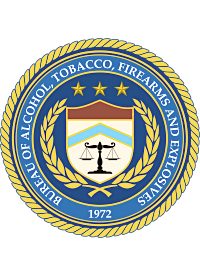
As the Obama administration is poised to enact a sweeping infringement of the right of Americans to keep and bear arms in the states bordering Mexico, the only thing which may stand in the way is not the Republican-dominated House of Representatives, but the Federal Paperwork Reduction Act.
The scale of the revision in U.S. law which the Bureau of Alcohol, Tobacco, Firearms and Explosives (still known as ATF) is contemplating is breathtaking; as noted in a recent Reuters article: “The measure would require around 8,500 gun dealers in Arizona, California, New Mexico and Texas to report sales of two or more high-powered semi-automatic rifles with detachable magazines to the same person within a five-day period.” The supposed rationale for this action is to reduce the flow of arms to Mexico, which is rapidly devolving into a civil war between the central government and drug cartels. The sketchy connection between interfering with the second amendment rights of American citizens and the failed state south of our border is a GAO study which attempts to link American firearms to the conflict, and the Reuters article dutifully repeats the Obama administration “line” on this point:
The move to boost ATF’s ability to target gun traffickers comes as Mexican authorities are struggling to contain raging drug violence south of the border, where shootouts, beheadings and torture killings are a daily occurrence.
About 90 percent of the crime guns seized and traced in Mexico last year were initially sold in the United States, according to ATF. Investigators say around three-quarters of traces lead back to sales in the four states flanking the U.S. border.
This “iron river” of firearms flowing south to the drug cartels includes high powered Kalashnikov and AR-15 rifles toted by cartel hitmen across Mexico, and decorative .38 caliber pistols popular with drug kingpins.
The highly misleading GAO statistic cited by the ATF has been refuted. Consider the following analysis from the July 2009 issue of Second Amendment Foundation’s Gottlieb-Tartaro Report:
The GAO obediently came up with some sensational numbers: “about 87 percent of firearms seized by Mexican authorities and traced in the last 5 years originated in the United States.” If true, it would be a huge failure of our border patrol. [Emphasis in original.]
Not only that, the report emphasized, “Many of these firearms come from gun shops and gun shows in Southwest border states.” It’s as if these law-abiding Americans were deliberately supplying Mexican gun smugglers. [Emphasis in original.]
The GAO report is just to get more gun control laws. In fact, that “87 percent” number for U.S. guns “seized and traced” in Mexico is a flat lie.
The real number is closer to 22 percent, but you can’t tell until 21 pages into the GAO report. The discrepancy is in what the GAO counted: only guns traced, not guns seized. A lot of guns (30,000) were seized, but few traced (7,200).
Page 21 of the report says, “In 2008, of the almost 30,000 firearms that the Mexican Attorney General’s office said were seized, only around 7,200, or approximately a quarter, were submitted to ATF for tracing.”
It was 87 percent of those 7,200 that were traced to the U.S., but that’s only about 25 percent of the 30,000 seized. That’s a prime example of How to Lie With Statistics, as author DARRELL HUFF titled his 1993 book.
Far from an “iron river,” the flow of arms from the United States is more like an arroyo, which is a channel of bare earth until a storm comes along.
But, as Bruce Walker has written previously for The New American, the new ATF regulation is not about stopping the flow of guns to Mexico; it is about creating a registration of gun ownership:
The Bureau of Alcohol, Tobacco, Firearms and Explosives (still known as ATF) is considering a pilot program that would require gun dealers in the borders states of Texas, New Mexico, Arizona, and California to report each sale of two or more rifles. Jim Pruett of Jim Pruett’s Guns and Ammo in Houston considers such a move simply a back door to gun registration. “It [would go] on record with the ATF forever,” Pruett says of the reported sales. “There’s no mention of purging the system. So what you basically have is ad-hoc gun registration.”
It is hard to argue with Pruett’s logic. “Notification” is, for all intents and purposes, “registration.”
And this gun registration would be accomplished by administrative diktat without the authorization of Congress.
According to a story by Mark Wiggins of KXXV News in Waco, Texas, the only thing standing in the way of the ATF at this point is not the Constitution, or the Congress: It is the sheer bulk of the paperwork needed to track gun ownership:
Another issue is a certain degree of ambiguity in the wording of the regulations. Although large semi-automatic rifles are clearly targeted, if the paperwork requirement is interpreted to apply to smaller target rifles popular with younger customers, the amount of extra paperwork could be formidable.
Ironically, the only thing holding up the new rules from being put into effect is clearing the Federal Paperwork Reduction Act — which is aimed to decrease the amount of paperwork the government has to deal with.
If the Obama administration wants to do something about stopping the flow of firearms to Mexico, it might consider actually giving the U.S. Border Patrol the means to effectively reduce the amount of illegal border traffic. The arms cannot flow south across the border if the flow of illegal aliens from Mexico is effectively curtailed. The notion that legal purchases conducted by American citizens are to be monitored forever by a federal bureaucracy for the benefit of a foreign power trapped in a civil war is asinine.
As the Obama administration continues to prove unwilling to stop the flow of Mexican criminals across the border, citizens of the border states are in need of the means of self-defense. The reaction to the increased flow of Mexican gang violence into the United States is to make it harder for Americans to defend themselves from criminals who have violated the laws of this nation to get here in the first place.



